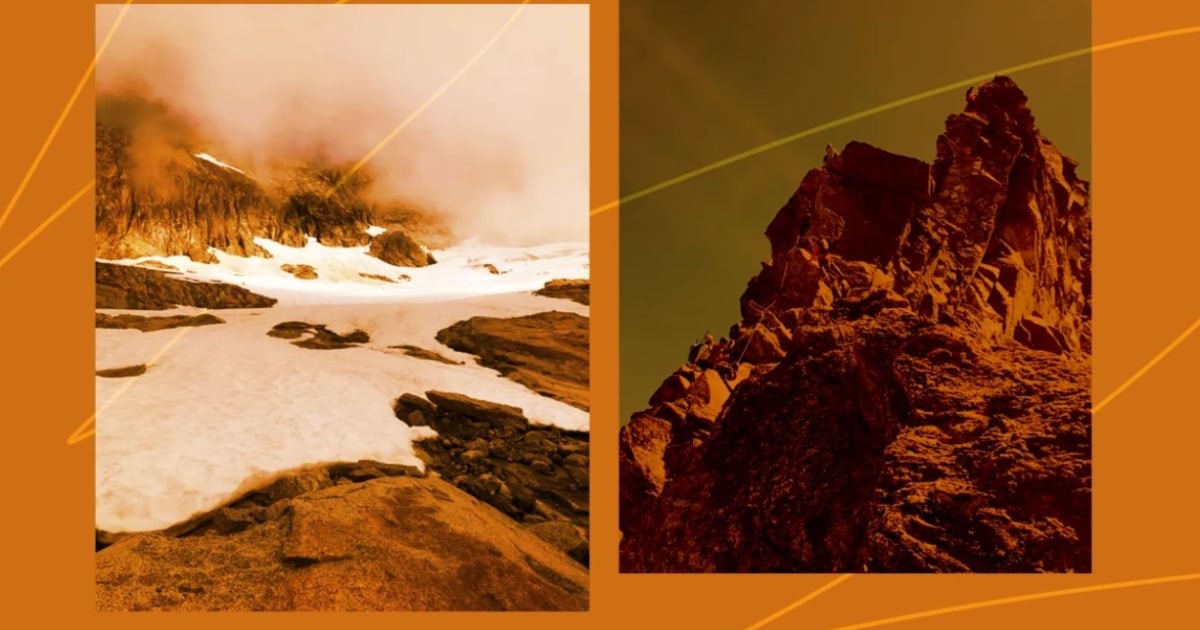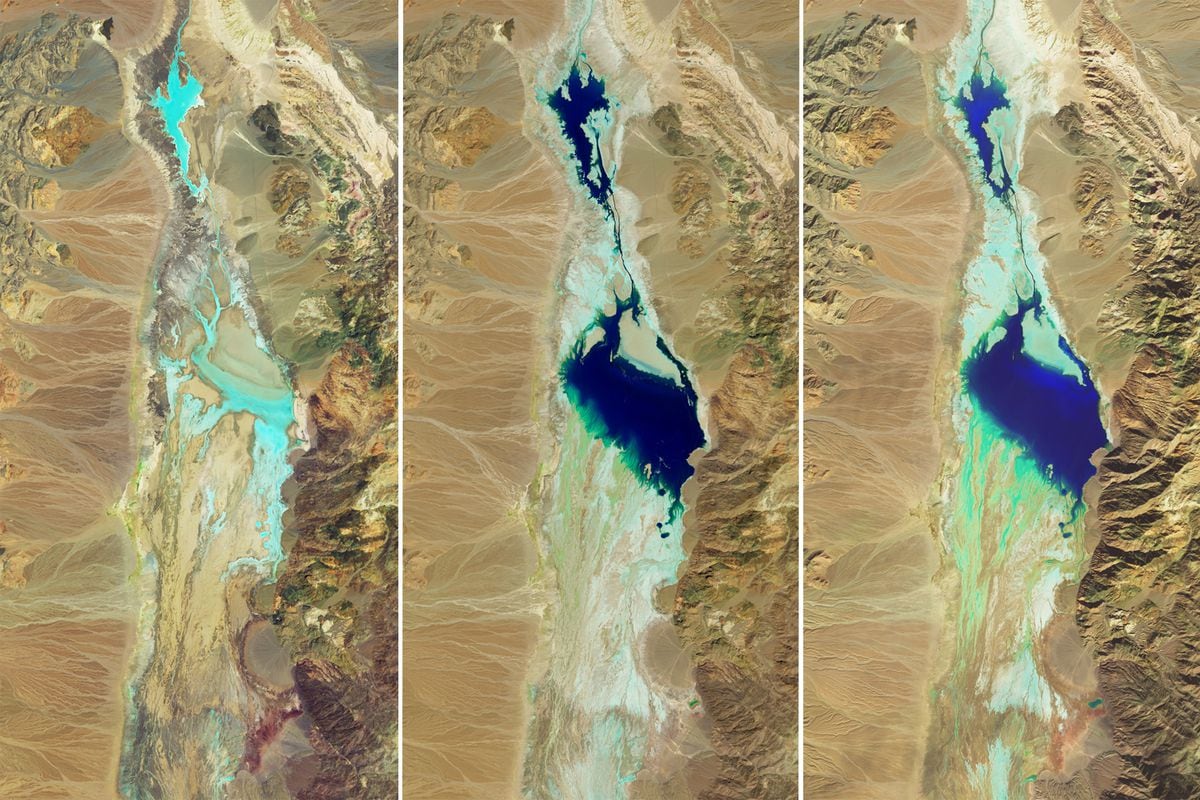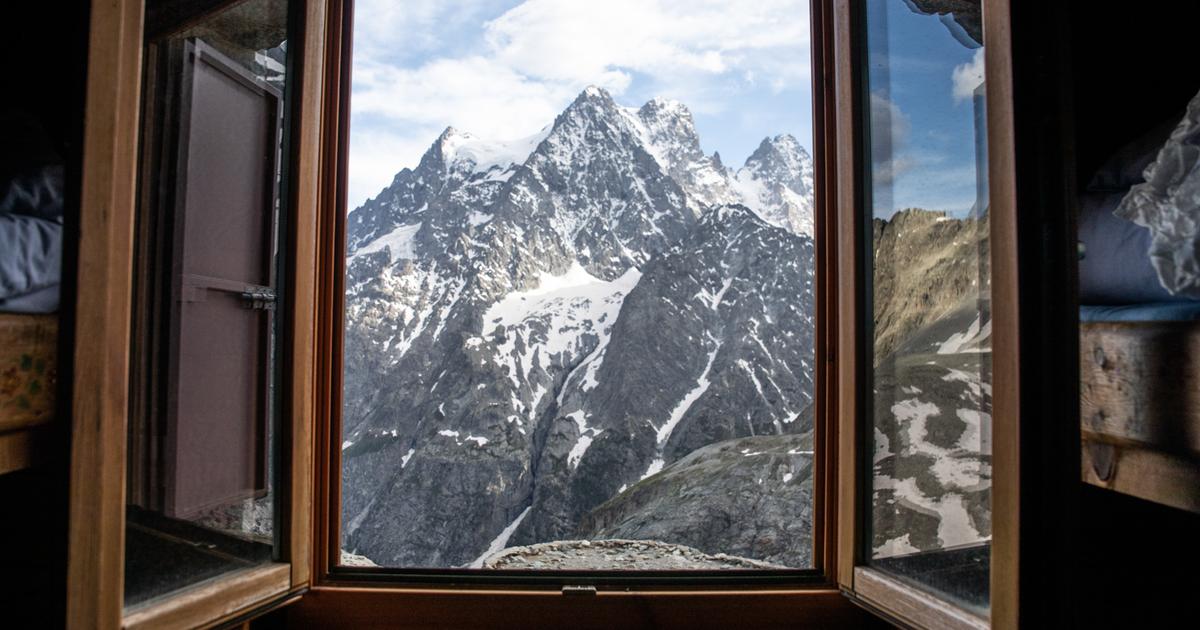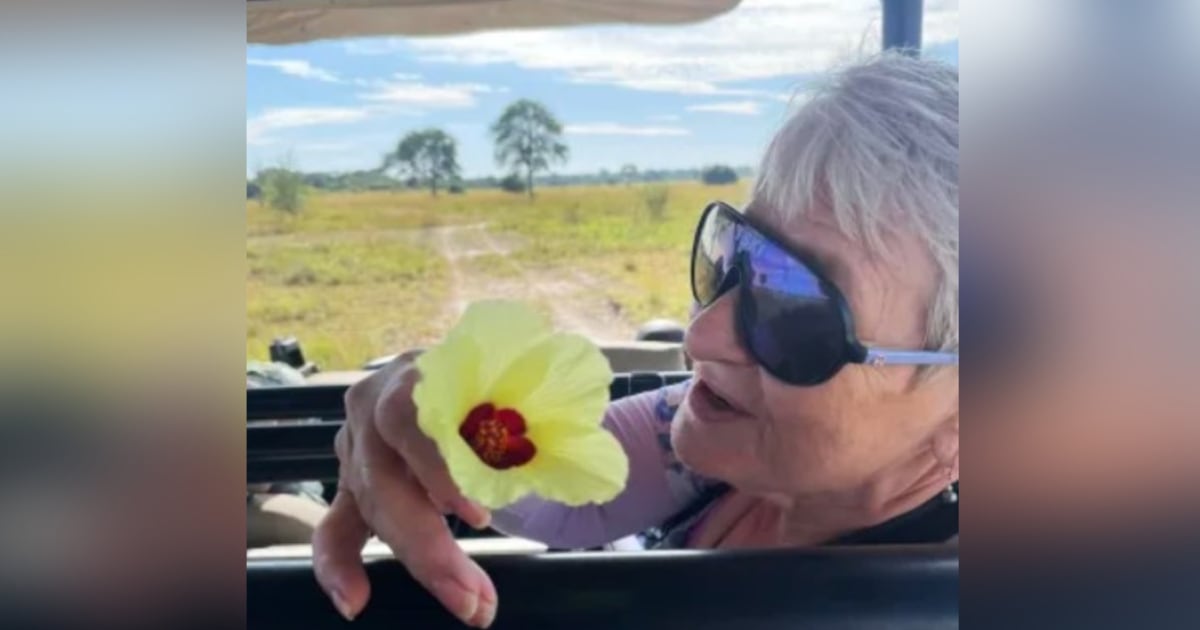By Tim Stelloh and Nigel Chiwaya -
NBC News
According to an analysis of 15 years of federal data by NBC News, sister network of Noticias Telemundo, a spectacular but little-visited national park northeast of Seattle has a higher death rate than any other park in the system.
And some climbers and guides worry that with no change in North Cascades National Park, authorities may be amplifying its dangers.
The park recorded 3.7 deaths per 100,000 visitors between 2007 and 2021, more than triple that of the next deadliest place, Wrangell-St. Elias National Park Preserve in southern Alaska, according to National Park Service data.
[The Green House of Bolivia where they teach children to conserve the environment]
Fourteen people died in the North Cascades in those 15 years, when an average of just over 25,000 people visited them annually, a considerably lower number than in such well-known parks as Lake Mead, Yosemite or the Grand Canyon.
The total number of deaths in those parks was much higher, as was the number of visitors.
Causes of death were not listed in the data, which was obtained through a North Cascades public records request.
The agency has not processed a separate records request for causes of death.
The North Cascades National Park “complex” includes two national recreation areas popular with boaters, but the park's namesake site is a well-known mountaineering destination, with routes featured in the esteemed North America's 50 Climbs
guide
.
Kelly Bush, a former ranger who worked for the North Cascades for more than three decades and oversaw its search-and-rescue operations, said many of the deaths she was aware of involved alpine climbers and hikers, people falling from mountains or were fatally injured by falling rocks and ice.
Planet Earth: This is how oil exploitation is impacting the Ecuadorian jungle
Feb 19, 202301:22
Another popular park with alpine climbers, Alaska's Denali National Park and Preserve receives an average of more than half a million visitors a year, about 20 times more than the North Cascades.
If Denali had the same death rate as the North Cascades, it would record an average of 16 deaths a year, according to the analysis.
[Hazardous chemical train issued a critical alert for heated axle just before derailing in Ohio]
Some climbers and guides say that park officials could do more to make the North Cascades less risky, such as allowing the careful and limited use of "bolt anchors," devices attached to rock that effectively tether climbers to the mountains. .
Anchors are the safest, strongest piece of equipment climbers can use to protect themselves from falls, and perhaps the most divisive: some oppose them because they permanently alter the landscape.
It is not clear if the park will allow the anchorages.
Much of the North Cascades is wilderness, and park officials are known for their staunch protection of that land and their defense of traditional mountaineering, with their mantra of leaving no trace.
Planet Earth: The Colombian avocado becomes the fruit of contention
Feb 12, 202302:02
But one veteran guide made an ominous prediction: If authorities don't allow climbers to make some of its most popular routes safer, the park could see more accidents, injuries and deaths.
To account for the possibility of errors in the Park Service data and the potential increase in visitor numbers, NBC News more than doubled the average number of annual visitors.
The adjusted mortality rate — 1.85 per 100,000 visitors — was still higher than the 1.09 rate for Wrangell-St. Elias National Park and Preserve, according to the analysis.
[More than 330 species of wildlife around the world are contaminated with “permanent” chemicals]
Cynthia Hernandez, a park service spokeswoman, said in an email that multi-year data obtained by NBC News is preliminary and could change upon review.
It's unclear how many people have been injured in climbing and hiking accidents in the North Cascades.
Hernández stated that in the national park system there have been "numerous non-fatal injuries and near misses, which often go unreported."
Pickett Range in North Cascades National Park.Steph Abegg
He said slip, trip, fall, drowning and car accidents were the most common ways park guests were injured.
“Each park has inherent and unique risks, and while some park activities are riskier than others, this does not necessarily make the park more 'dangerous,'” Hernández explained.
"A very dangerous park"
Climbers, guides and Bush, a former North Cascades ranger, described this nearly 800-square-mile (2,072-square-kilometer) park as magnificent, rugged wilderness, a place of spectacular ridges and valleys, hundreds of glaciers, almost no infrastructure and, at least for the lower 48 states, uncommon remoteness.
The volatility of the weather and the instability of the landscape, aggravated by the climate emergency, also make it dangerous.
Part of the North Cascades website is dedicated to warning visitors of the park's many hazards and offering advice on how to navigate it safely.
[What chemicals were released from the Ohio train derailment and how could they harm the health of residents?]
“It's a very dangerous park,” said Bush, the former park ranger who also oversaw the park's mountaineering program before retiring nearly a decade ago.
“It would be easy to die in that park,” she pointed out.
Bush said that in the 36 years he has worked in the North Cascades, most of the deaths he found were among "very" experienced climbers.
“Those are the ones that go to the North Cascades,” he said.
Some climbers pointed to the ban on bolt anchors as another possible source of danger.
The rule, which echoes a longstanding debate in the climbing world about how far people should be allowed to tamper with nature, means visitors must rely on other, less secure anchors such as nylon webbing, he said. Erik Murdock, vice president of policy and government affairs at the Access Fund, a nonprofit organization that advocates for climbers and supports the use of anchor bolts.
In video: Canals of the iconic Venice dry by a prolonged low tide
Feb 24, 202300:30
When asked about the ban, Hernandez referred to the park's lengthy “digest” of policy, which says fixed anchoring is prohibited in the North Cascades Wilderness.
According to the park's website, the ban is designed to "preserve a wilderness experience that reflects a raw style of mountaineering."
[The 'Ice Mermaid' challenged nature for Antarctica, which is at risk]
The goal of this policy, according to Bush, is to prevent wilderness areas from becoming a "pin-climbing gym all over the mountain."
He declined to say whether he supported the use of bolted anchors in the North Cascades.
Murdock said visitors should try to leave as little behind as possible, but in an area like the North Cascades, a properly placed stainless steel bolt is much more durable and reliable than webbing.
The veteran guide to the ominous warning said there seem to be few rules for temporary anchoring, describing it as a "pitched battle."
People “end up in dangerous places because they see anchorages in the middle of nowhere,” said the guide, who has been visiting the North Cascades since the late 1990s and asked not to be named for fear of retaliation from the park, which issues the permits.
Another guide, Josh Cole of North Cascades Mountain Guides, said "near misses" regularly occur in the park due to a lack of high-quality fixed anchors.
[The 'glacier at the end of the world' is melting at alarming levels]
Hernandez, the park spokeswoman, did not respond to a request for comment about the potential dangers associated with the temporary anchorages.
She said protective gear that doesn't require drilling and disturbing natural features — such as straps — can be left in place.
A Death on Forbidden Peak
Murdock pointed to a couple of incidents from a decade ago that highlight this problem.
In August 2012, a guide replaced what Murdock described as an old and unsafe "sling" anchor with two bolts on the west ridge of Forbidden Peak, one of the park's most popular trails.
At the time, there was no documented policy on the matter, and the guide was trying to protect climbers from falling rocks by establishing a safer route, Murdock said.
The west ridge of Forbidden Peak.B.
Ducay/N.P.S.
Bush said he alerted the park manager to the existence of the anchorages.
Within a few days, the North Cascades rangers removed the anchors.
They also removed a second set of older bolts along the route, he said.
The guide who installed the anchors did not respond to requests for comment.
Bush said the guide never asked the park for permission or mentioned his desire to establish a safer route to two rangers he encountered shortly before setting them up.
After his withdrawal, and without public debate, the North Cascades superintendent added the rule to the park compendium that prohibited bolt-on anchors, Bush said.
(Hernández said public notice is required for actions in the digest, but not a public comment period.)
[The climate emergency will displace 17 million people in Latin America]
A month later, the guide who asked not to be named inspected the descent of the west ridge of Forbidden Peak and complained to the Access Fund about how dangerous the route had become after the removal of the anchors and how exposed it was to rock fall.
“It continues to amaze me that they went to such lengths to make this perilous descent even more perilous
,” the guide wrote in an email Murdock provided to NBC News.
"In my professional opinion, this is nothing more than an accident waiting to happen."
A year after the removal, on September 14, 2013, a climber descending the west ridge of Forbidden Peak was struck by a falling rock and fell 300 feet to his death, according to an account that Bush wrote three days later.
His climbing partner told Rock and Ice climbing magazine that before being hit by the football-sized boulder, he had been forced to remove his rope and climb over a narrow ledge to try and reach an old anchorage.
"Because the bolts weren't there, he was pushed into an area where there was rockfall," Murdock explained.
“Does that mean you caused his death?
I don't think you can say that."
Planet Earth: The Perito Moreno Glacier is one of the wonders of the world at risk due to the climate emergency
Feb 3, 202303:58
For the guide who offered the dire warning, the death illustrates the potential danger in the North Cascades — and "probably won't be the last if that decline doesn't change," he said.
Hernandez said: "Climbing carries inherent risks, including the risk of falling rocks, which could occur at any time during a climb."
The bolts were removed consistent with park policies and laws, he said, and the west ridge of Forbidden Peak has been climbed for years without fixed anchors.
“Every time a climber puts on a harness, it is their personal responsibility to assess potential hazards and identify an acceptable level of risk that they are willing to take,” he said, adding that authorities encourage visitors to check park policies and make sure they are familiar with “clean” climbing techniques.
Before the fatal fall, the Access Fund and other groups had been lobbying the park to develop an authorization process for fixed anchors, including bolts, Murdock said.
He pointed to 2013 National Park Service guidance that says wilderness sites should do just that, while ensuring that fixed anchorages remain rare.
[More than 5,000 tortoises and 300 iguanas found smuggled into a house in Colombia. They were going to eat them]
Cole, of the North Cascades Mountain Guides, said there are pros and cons to allowing bolts in the park.
But, he said, "ultimately, the decision is being made by a small group of people without input from the climbing community."
Murdock said park officials promised to address the issue in a wilderness management plan review that would allow for public participation.
“In 2014 or 2015 they said it would take a couple of years.
They haven't even started it," Murdock said.
Hernández wrote that the park intends to hold a public planning process for climbing and managing natural spaces in the "near future."
“Until the park can meet this planning requirement or approve a permit, fixed anchors (bolts) continue to be prohibited,” he said.
A near fatal fall and a daring rescue
Jason Martin, executive director of the Washington-based American Alpine Institute of Bellingham, a climbing school and guiding service, pointed to other factors that can make the park prone to danger.
The climate emergency, with rising temperatures, for example, is affecting the region's glaciers, causing them to retreat and wreaking havoc on the landscape they have helped hold together for so long.
The change has loosened permanent snowfields and caused more rockslides and ice.
One of the most popular routes in the park, the Price Glacier is barely climbable.
“It is falling apart.
There are giant blocks of ice the size of a car that fall, "said Martin.
Steven Trent climbing in North Cascades National Park two days before his fall in 2009.Steph Abegg / NPS
For Steven Trent, a commercial pilot who has been climbing in the park since the 1990s, a near-death experience came down to a loose rock on an unfrequented trail.
On July 5, 2009, he and a partner were pretending to climb a peak called Mount Terror when the rock broke free and fell down the mountain.
Trent said he plunged tens of meters, bouncing off the mountain and stopping only when he reached the end of the rope that attached him to his climbing partner, Steph Abegg.
According to the account Abegg posted on his website, what followed was a desperate effort to get help, including first aid administered on the fly on a mountainside and a risky rescue in which Trent was picked up by a ranger. dangling from a helicopter in hurricane force winds.
Trent had torn his Achilles tendon, broken his left femur, and sustained a nasty cut on his head.
Seeing the approaching pilot, he said, was like seeing Superman.
Trent made a full recovery and climbed the same route again without incident a few years later.
But if a member of his climbing group hadn't brought a mobile phone — and if they hadn't found a signal in the wilderness, a lucky break that allowed them to call for help — things might have turned out differently, Abegg said.
"We would have walked out and caught him. But he might not have made it," Abegg said.












/cloudfront-eu-central-1.images.arcpublishing.com/prisa/KMEYMJKESBAZBE4MRBAM4TGHIQ.jpg)


